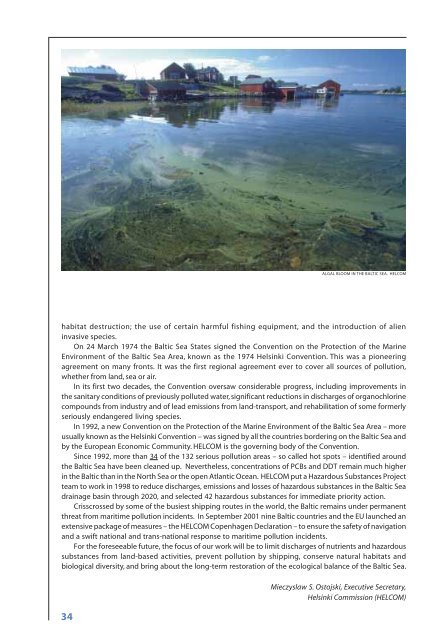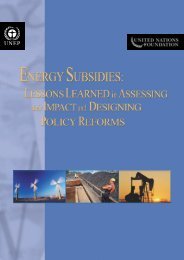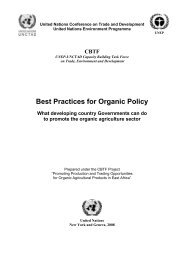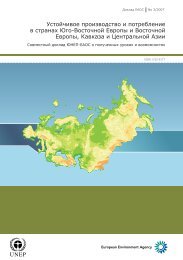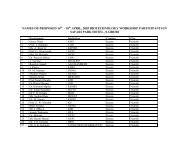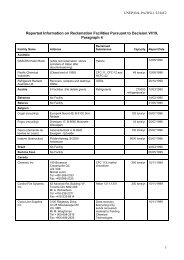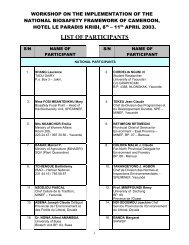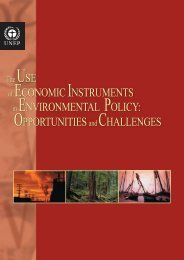Regional Seas: Strategies for sustainable development - UNEP
Regional Seas: Strategies for sustainable development - UNEP
Regional Seas: Strategies for sustainable development - UNEP
Create successful ePaper yourself
Turn your PDF publications into a flip-book with our unique Google optimized e-Paper software.
ALGAL BLOOM IN THE BALTIC SEA. HELCOM<br />
habitat destruction; the use of certain harmful fishing equipment, and the introduction of alien<br />
invasive species.<br />
On 24 March 1974 the Baltic Sea States signed the Convention on the Protection of the Marine<br />
Environment of the Baltic Sea Area, known as the 1974 Helsinki Convention. This was a pioneering<br />
agreement on many fronts. It was the first regional agreement ever to cover all sources of pollution,<br />
whether from land, sea or air.<br />
In its first two decades, the Convention oversaw considerable progress, including improvements in<br />
the sanitary conditions of previously polluted water, significant reductions in discharges of organochlorine<br />
compounds from industry and of lead emissions from land-transport, and rehabilitation of some <strong>for</strong>merly<br />
seriously endangered living species.<br />
In 1992, a new Convention on the Protection of the Marine Environment of the Baltic Sea Area – more<br />
usually known as the Helsinki Convention – was signed by all the countries bordering on the Baltic Sea and<br />
by the European Economic Community. HELCOM is the governing body of the Convention.<br />
Since 1992, more than 34 of the 132 serious pollution areas – so called hot spots – identified around<br />
the Baltic Sea have been cleaned up. Nevertheless, concentrations of PCBs and DDT remain much higher<br />
in the Baltic than in the North Sea or the open Atlantic Ocean. HELCOM put a Hazardous Substances Project<br />
team to work in 1998 to reduce discharges, emissions and losses of hazardous substances in the Baltic Sea<br />
drainage basin through 2020, and selected 42 hazardous substances <strong>for</strong> immediate priority action.<br />
Crisscrossed by some of the busiest shipping routes in the world, the Baltic remains under permanent<br />
threat from maritime pollution incidents. In September 2001 nine Baltic countries and the EU launched an<br />
extensive package of measures – the HELCOM Copenhagen Declaration – to ensure the safety of navigation<br />
and a swift national and trans-national response to maritime pollution incidents.<br />
For the <strong>for</strong>eseeable future, the focus of our work will be to limit discharges of nutrients and hazardous<br />
substances from land-based activities, prevent pollution by shipping, conserve natural habitats and<br />
biological diversity, and bring about the long-term restoration of the ecological balance of the Baltic Sea.<br />
34<br />
Mieczyslaw S. Ostojski, Executive Secretary,<br />
Helsinki Commission (HELCOM)


